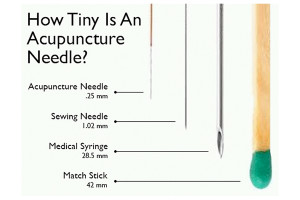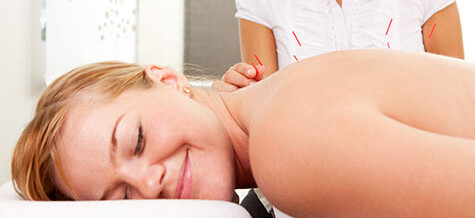
After decades of being prescribed antibiotics by my doctor for my chronic and frequent sinus infections, I tried my first acupuncture treatment 25 years ago. It was time to to try something different, and I was delighted that I could breathe so much better after my first treatment! I learned that regular treatments could help me manage my allergies and build and maintain my immune system.
Eleven years ago, after months of cancer treatment, my immune system was shot. Surgery, chemo and radiation can do that to a person. After my treatment had concluded, I developed a case of shingles. Because it was misdiagnosed at first, I soon endured searing pain on my chest wall and adjacent shoulder blade. Not a fun time.
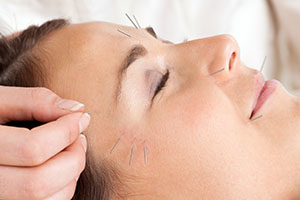
Acupuncture really helped to relieve my allergies and sinusitis.
My acupuncturist, at the time, worked with me weekly to manage the acute pain. Because of the late diagnosis, I have recurring neuropathy (nerve pain) that I manage every couple weeks with acupuncture, especially if I get to feeling run down.
After moving to Denver, I was lucky enough to connect with Debbie Harrington, a licensed acupuncturist and someone I now consider a good friend. Maintaining my health and immune system has been key to managing the neuropathy, so Debbie also focuses on overall health, many times boosting the immune system. I always feel better and stronger leaving one of our sessions. And it certainly beats the antibiotic protocol!
I’ve also had moxibustion and cupping treatments with Debbie (see below for explanation) All are safe, painless and non toxic treatments.
Debbie joins The Non Toxic Lifestyle this week as a guest blogger, as she provides a brief overview of acupuncture. If you haven’t tried acupuncture, I highly recommend you give it a go. It really works!
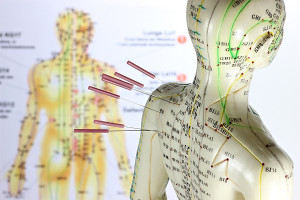
Acupuncture targets specific areas of the body, called Meridians in Chinese medicine. (click to enlarge)
A Brief history of Acupuncture
Acupuncture has a conflicting history, but many people agree it originated in China over 3000 years ago transmitted as an oral tradition. Original needles were made of stone, bone or bamboo. It gained attention in the U.S. After President Nixon’s visit to the People’s. Republic of China in 1972. In 1973 the first acupuncture practice laws were passed in Maryland, Nevada and Oregon. Today there are over 20,000 licensed acupuncturists in the U.S. Some sources say an estimated 20 million Americans have tried acupuncture.
Some Common Myths about Acupuncture
I am afraid it isn’t safe…
When performed by a qualified professional, acupuncture is one of the safest medical procedures in the world. A licensed practitioner (LAc) in Colorado is one who has completed a 3-4 year program at an accredited school, including over 1000 hours of clinical practice, passed national boards, and carries malpractice insurance. Re-certification is required every 4 years.
Acupuncture involves insertion of tiny, factory sterilized, disposable needles. Occasionally there may be a small bruise, temporary nausea or dizziness (clearing up within a few minutes). We use precaution with fragile patients and refer to other healthcare professional when appropriate.
I am afraid it will hurt…
Acupuncture involves inserting extremely thin (the thickness of a human hair) needles that are made of surgical stainless steel, are flexible and solid which means that they penetrate the skin without breaking it. The number of needles, location and duration varies from patient to patient. On average, 20-30 needles are inserted for 20-40 minutes. As needles go through the skin, the patient may feel a slight pinch or no sensation at all. Once the needles are in place some people may feel a vague numbness, tingling, heaviness or warmth. Most people report having a sense of relaxation and well-being…some even falling asleep.
Still not convinced? Have a case of aichmorphobia (fear of pointy objects)? There are other techniques used to activate the acupuncture points and support the healing process:
-
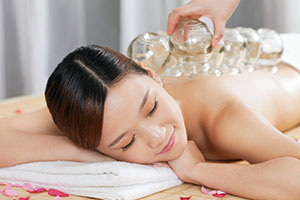
Cupping is another effective technique used to treat common colds and muscular pain by increasing circulation.
Cupping – Cupping uses glass or plastic cups to create suction when placed upon the skin, and is used to treat common colds and muscular pain. There may be small, red, round painless marks on the skin which clear within a few days.
- Gua sha – Gua sha, also used to treat the common cold and muscular pain, involves rubbing lubricated skin with an instrument that has a smooth, flat surface. The purpose is to promote circulation to the area. Small red dots may come to the surface and clear within a few days.
- Moxibustion – Moxibustion uses the medicinal herb Mugwort to warm and nourish the body. The herb can be burned above the skin, or placed on top of a needle creating a sensation of warmth that is relaxing and calming.
- Tuina – Tuina is a form of massage/acupressure for pain syndromes.

Acupuncture can be introduced to patients as young as eight.
There is also a non-needle technique called Shonishin for pediatric patients. Needles are usually introduced at age eight.
Why did you put the needles there?
Point selection/ combinations depend on the condition of your Qi, sometimes spelled Chi and pronounced “chee.” Much of Chinese philosophy and medicine are based on the existence and properties of one’s circulating life force, known as Qi. This fundamental principle says that when balanced, there is a healthy flow of Qi along 12 main meridians or channels and can be accessed through 365 specific points on the body.
When Qi is deficient, unbalanced or blocked there is pain or illness. Acupuncturists can choose points locally, distally or adjacent to correct the same problem. For example, points for headache may be placed on the head, hands and feet to correct the flow of Qi.
I don’t have pain so why would I try acupuncture?
Acupuncture is best known for treatment of pain but is actually a comprehensive health care system originating in China over 3000 years ago. It has a wide range of applications for both acute and chronic problems. Due to its holistic approach (honoring the interconnectedness of body, mind and emotion) it is used to diagnose, treat and prevent illness. WHO (World Health Organization) has recognized acupuncture’s effectiveness in over 40 disorders. Some of these include:
- Respiratory System (cold/flu)
- Musculoskeletal System (pain)
- Women’s/Men’s Health infertility/impotence, menopause)
- Digestive Health (IBS, constipation)
- Nervous System/Emotional (anxiety, Bell’s Palsy, insomnia, addiction)
- Ear/Nose/Throat (TMJ, sinusitis)
- Side effects from cancer therapies
What to Expect at Your First Acupuncture Appointment

Many acupuncturists offer a soothing atmosphere for their patients.
During the initial consultation, a full health history will be taken with emphasis on your chief complaint. Your acupuncturist will check your tongue (shape, size, color, coating and geography). Your pulse will be checked in 3 positions on both wrists. All this information together is used to evaluate health and confirm diagnosis. You will be positioned on a warm massage table, needles will be inserted, lights dimmed and soothing music played.
This initial appointment takes about 1 1/2 hours. The follow-up appointment usually lasts about 1 hour. Results of previous treatment are discussed along with issues of concern, tongue and pulse examined and treatment given. This may include needles or other modalities (cupping, moxa, guasha or tuina).
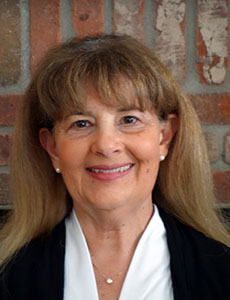
Debbie Harrington
Debbie Harrington is a board-certified practitioner of Traditional Chinese Medicine (TCM), licensed in the state of Colorado. She is also a Registered Nurse licensed in the State of Colorado. As a health care provider, with both western and eastern experience, her interest in Chinese Medicine is due to its being a gentle, yet extremely effective health care system that honors the individual and recognizes their relationship with nature. Debbie is in private practice in Greenwood Village, Colorado.
If you live in the Denver metro area and are interested in exploring the many health benefits of acupuncture, please contact Debbie. For new patients, she is offering an initial 90-minute consultation and treatment for $60 (a $20 reduction in fees for Non Toxic Lifestyle readers).
Debbie can be reached at (303) 550-8771.
To find a licensed acupuncturist in your area, check these sites:
www.acufinder.com
www.nccaom.com
Some health insurance companies are now reimbursing for acupuncture treatments, so be sure to ask!
![]()
If you “Like” this post, I’d be thrilled if you’d share it.
MAY

